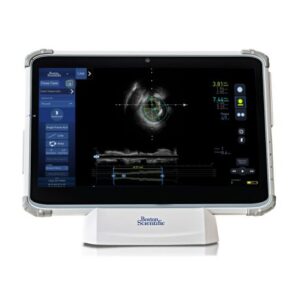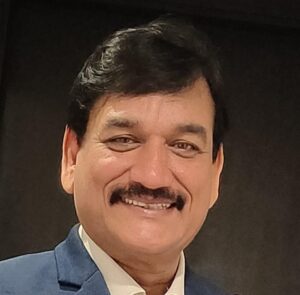1 in 10[1] people and 1 in 2 diabetics[2] suffer from Peripheral Neuropathy while 80% of patients remain undiagnosed[3]

P&G Neuropathy Awareness Week 2023 Roundtable
As part of Neuropathy Awareness Week 2023, P&G Health, brought together globally renowned health experts with 6000 Healthcare Professionals from across Asia, India, Middle East, and Africa at the ‘Demystifying Neuropathy Forum’. Hosted out of Mumbai and simulcast to 8 countries, the signature event saw deliberations on the latest clinical guidance on screening and management of the growing public health concern of Peripheral Neuropathy.
Peripheral Neuropathy (PN) is a chronic clinical condition, wherein the peripheral nervous system is damaged. Symptoms of Peripheral Neuropathy include numbness, tingling, prickling, and burning sensations in the hands and feet. Sufferers of PN report impacts on their quality of life including reduced physical abilities and poor sleep. Besides Diabetes Mellitus, obesity, alcohol misuse, and B vitamins deficiencies are other high-risk factors leading to peripheral nerve damage.
Aalok Agrawal, Senior Vice-President, P&G Health, Asia, India, Middle East & Africa said, “1 in 10 people and 1 in 2 diabetics are suffering from Peripheral Neuropathy. Yet many are unaware that early diagnoses can enable successful treatment outcomes, and damaged nerves can be regenerated if nerve damage has not progressed too far.[4] A leader in Nerve Health, P&G Health has been committed to enabling improved treatment outcomes, and enhanced quality of life for consumers since 1962. Our ‘Demystifying Neuropathy Forum’ saw a multidisciplinary panel of experts from across the globe and the region come together to share their clinical recommendations on assessment and etiology of Peripheral Neuropathy, and holistic treatment approach including role of B vitamins in supporting healthy nerve functions.”
Speaking at the forum, Prof. Rainer Freynhagen, Head of Department, Anaesthesiology, Critical Care Medicine & Pain Medicine at Benedictus Hospitals Tutzing & Feldafing Germany stated, “Peripheral Neuropathy and pain with neuropathic components are highly prevalent in the general population. Doctors around the globe see millions of patients suffering daily of these conditions which are relatively easy to diagnose but challenging to treat, particularly in advanced stages. Around 10% of the general population worldwide is affected by neuropathic pain and 50% of these patients are not sufficiently managed[1]. Although identifying a patient with PN is not rocket science, currently published studies across different countries confirm that up to 80% of patients remaining undiagnosed and untreated. Many people may report their painful sensations only after they become unbearable but for me much more important is the fact, that only less than 1/3rd of physicians are confident to recognize symptoms and signs of PN accordingly. To me it’s appalling that for many physicians’ neuropathic pain has often the lowest importance in comparison to other symptoms, even though it’s one of the most burdenful problems with a tremendous impact on our patients quality of life.”
Prof. Dr Satish V Khadilkar, Renowned Neurologist, Professor and Head of Department of Neurology at Bombay Hospital Institute of Medical Sciences in Mumbai, India stated, “Diagnosing Peripheral Neuropathy is an unmet need. If PN is not diagnosed and treated in early stages, it usually progresses into neuropathic pain which can lead to several comorbidities which significantly impact the patient’s quality of life, social life and working life[5]. These include depression, sleep disturbances, anxiety which also require treatment adding to the economic burden of the patient. Painful diabetic PN is significantly associated with disruptions in employment status and work productivity. Of working patients, 59% reported being less productive at work[6].”
According to Dr Ankia Coetzee, Endocrinologist, University of Stellenbosch Faculty of Medicine and Health Sciences, Cape Town, South Africa, “Each contact with a patient is an opportunity and primary care physicians can play a key role in diagnosing neuropathy[7]. As some patients might have difficulties in describing their symptoms properly, proactively probing for characteristics of PN such as numbness, pins and needles and tingling sensation, lancinating, stabbing or electric shock like pain can be a good starting point. Easy to perform sensory tests such as vibration perception testing, pin prick test, monofilament test etc. take no longer than a few minutes and guide the diagnosis, while laboratory tests can help refine the diagnoses.“
Dr Inna Eiberger, Global Medical Director, P&G Health Nerve Care Franchise shared, “Neurotropic B vitamins are essential for nerve health and support nerve regeneration. Vitamin B1 provides energy to the nerves, vitamin B6 helps with signal transmission in nerves, while vitamin B12 supports nerve regeneration. An in-vitro study initiated by P&G Health showed that when Vitamin B1, B6, and B12 were added to nerve cultures with healthy nerve cells, there was an increase in total neurite length of 124% and an increase in the total cell body area of 55%. Nerve network of cells nourished with B1, B6, and B12, also doubled. Further in-vitro experiments have proven that Vitamins B1, B6, and B12 support nerve cell recovery after nerve cell damage.“
P&G Health also announced its collaboration with EcoMatcher, a social enterprise to plant a ‘Global Forest of Care’ with 2000 trees across India, Indonesia, Philippines, Thailand, and Malaysia to mark the tireless efforts of the collective ecosystem of healthcare professionals (HCP), medical associations and health authorities towards research, awareness, and holistic management of peripheral neuropathy.








